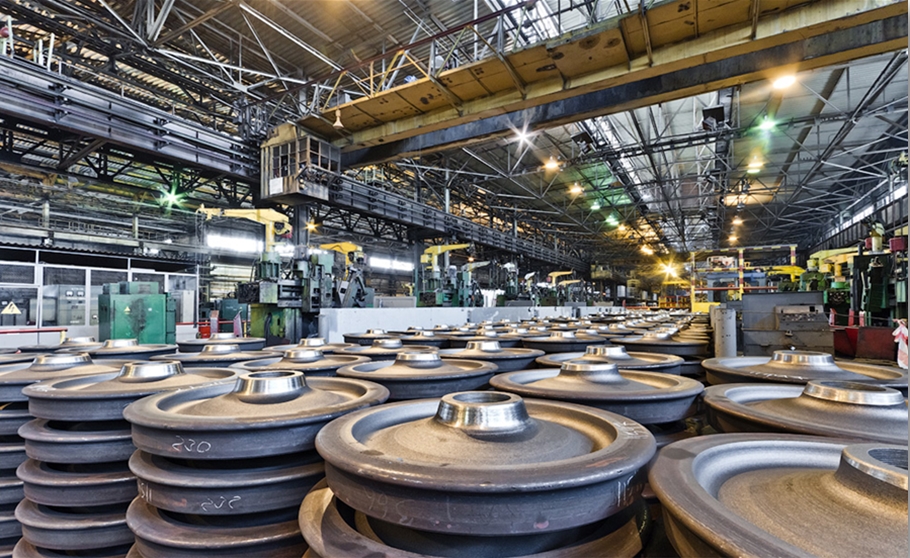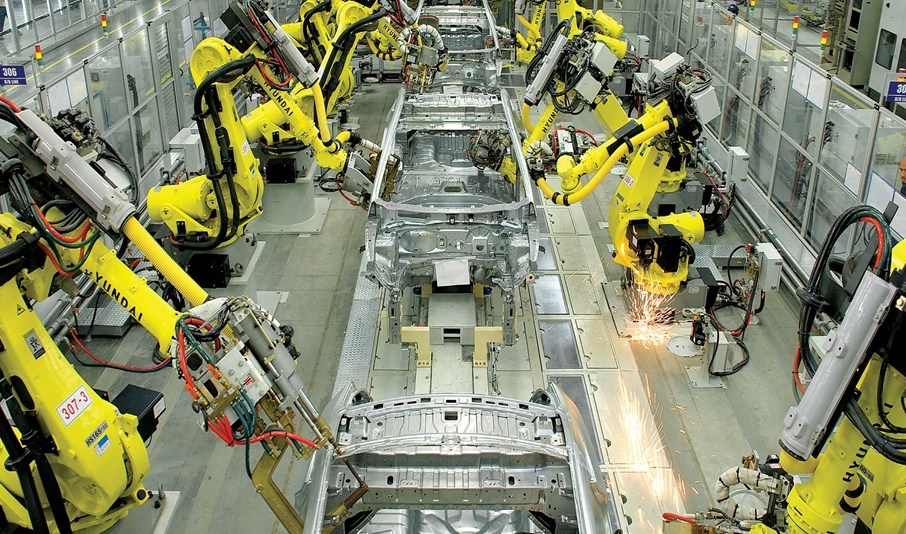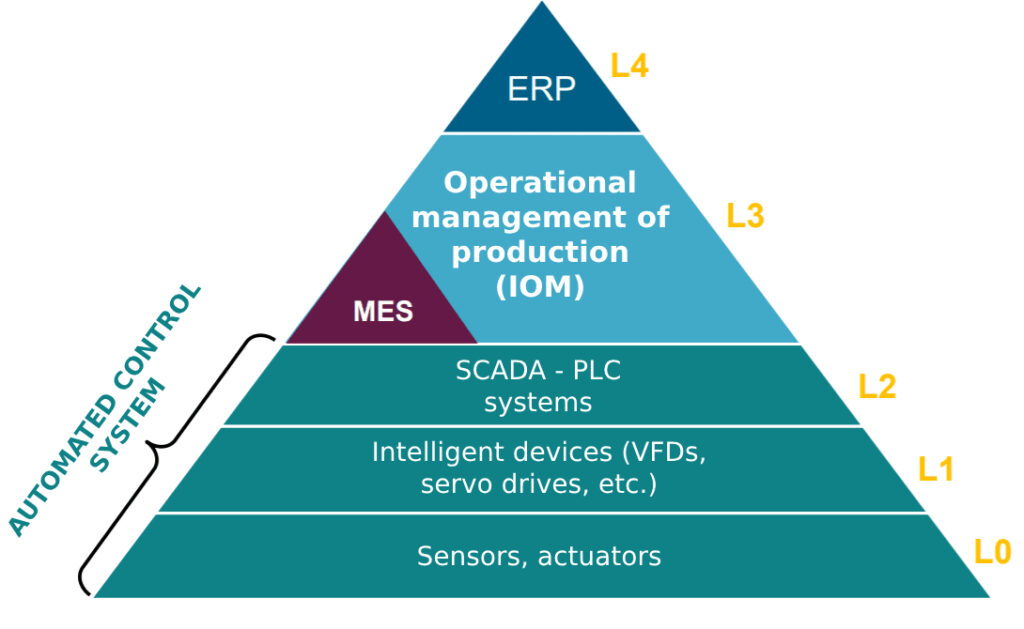Provides the ability to obtain information about the status and location of the order at any given time. Status information can include information about who is performing the task, components, materials and their suppliers, lot number, serial number, current production conditions, as well as any alarms, reprocessing data, and other events related to the product. The real-time tracking function also creates an archived record. This record ensures the traceability of components and their use in every final product.
MES-system – Production management

Enterprise MES implementation
INFOCOM Sp. z o.o. has experience in working with MES-systems based on Siemens products since 2008. We have passed the certification process and since 2020 have been an official partner of Siemens Digital Solutions in the MOM (Manufacturing operations management) direction. We offer services for the development and implementation of a complex of software products for production management, operational planning and product quality management. In the competence of INFOCOM Sp. z o.o.:
- implementation of MES systems for industrial production;
- solving the problem of operational planning and production optimization based on the Siemens Opcenter APS (Preactor) solution;
- LIMS – Siemens RD&Q laboratory management and quality solution.

MES — is an information infrastructure that helps coordinate production on a global scale, including in real time. This coordination affects specifications, equipment, manufacturing processes, organizational procedures, quality tests and manufacturing personnel and is usually viewed as the level that integrates business systems (eg ERP) and process control systems.



Do niektórych głównych zadań systemu MES należą:
Modeling the production environment
Sequence control
Control of work instructions
Tracking and monitoring orders
Operative information
Responding to demands
MES system functions:
Provides the formation of reports on the actual results of production activities, their comparison with historical data and the expected commercial result. Manufacturing results include metrics such as resource utilization, resource availability, unit cycle times, plan compliance, and performance standards. May include statistical process and product quality control (SPC / SQC). Organizes information from various functions that measure production parameters. These results can be prepared in the form of a report or presented in real time as an ongoing assessment of performance.
Monitors and manages maintenance of equipment and tools. Ensures their performance. Provides planning of periodic and preventive repairs, repairs as per condition. Accumulates and stores a history of events that have occurred (failures, decreased performance, etc.) for use in diagnosing and preventing possible problems.
Monitors the manufacturing process and either automatically corrects or provides operator decision support to take corrective action and improve production performance. This activity can be both intraoperative and aimed exclusively at monitored and controlled machines and equipment, or interoperative, tracking the progress of the process from one operation to another. This can include alarm management to ensure that personnel are notified of changes to the process beyond acceptable tolerance limits. It provides interaction between intelligent equipment and MES, which is possible through the data collection and storage function.
Provides real-time analysis of measured values from production to ensure correct product quality management and identify problems requiring operator intervention. This function generates recommendations for eliminating problems, determines the causes of marriage by analyzing the relationship between symptoms, personnel actions and the results of these actions. It can also monitor the performance of statistical process control and statistical product quality control (SPC / SQC) procedures, as well as manage the performance of laboratory tests of product parameters. To do this, laboratory information management systems (LIMS) are added to the MES.
Provides information about the state of personnel and their management at the required time scale. Includes reporting of attendance and working hours, certification tracking, the ability to track non-production activities such as material preparation or tooling as a basis for activity based costing (ABC). Interaction with the resource allocation function is possible to form optimal tasks.
Resource management: technological equipment, materials, personnel, personnel training, as well as other objects, such as documents, which must be available to start production activities. Provides a detailed history of resources and ensures that equipment is properly prepared for operation. Monitors the state of resources in real time. Resource management includes redundancy and scheduling in order to achieve operational planning goals.
Controls the content and passage of documents that must accompany the manufactured product, including instructions and standards of work, methods of execution, drawings, procedures for standard operations, part processing programs, records of production batches, messages on technical changes, transfer of information from shift to shift, and also provides the ability to maintain planning and reporting shop documentation. Also includes safety instructions, environmental controls, national and required international standards. Stores the history of passing and changing documents.
Interaction of information subsystems in order to receive, accumulate and transfer technological and control data circulating in the production environment of the enterprise. The function provides an interface for obtaining data and parameters of technological operations that are used in forms and documents attached to a unit of production. Data can be obtained from the workshop level either manually or automatically from equipment, at the required time scale.
Manages the flow of items in the form of jobs, orders, series, batches, and work orders. Dispatch information is presented in the sequence in which the work is to be performed and changes in real time as events occur at the shop floor. This makes it possible to change the predetermined schedule at the level of the production halls. Includes waste elimination and recycling functions, along with the ability to control labor costs at every point in the process with data buffering.
Provides the ordering of production tasks based on the sequence, attributes, characteristics and recipes related to the specifics of products such as shape, color, sequence of operations, etc. and production technology. The goal is to create a production schedule with minimal equipment readjustments and parallel operation of production facilities to reduce time to finished product and downtime.
Where is the MES level?
The link between management and ERP creates the so-called MES level (MES = Manufacturing Execution System)

According to statistics, the implementation of MES brings the following benefits:
Reduced production cycle times by 45%
Reduction of data entry time 75%
Reduction of work-in-process 34%
Reduced volume of paper reporting between shifts 61%
Reduction in the development of new products 33%
Reduction of scrap volume 24%

MES (Manufacturing Execution System) is a software package for solving problems of operational planning and production management. Systems of this class are designed to solve synchronization problems, coordinate, analyze and optimize production within a specific production.
Development of a pilot project to assess implementation opportunities:
Before starting a project to implement a full-fledged solution, we practice, together with the customer’s team, the preparation of a demo project for a production site, where the customer’s team has the opportunity to evaluate the benefits of implementation and the desired level of detail of the processes.
This site uses cookies as specified in the privacy and cookies policy. You can specify the conditions for storing or accessing cookies in your browser.
